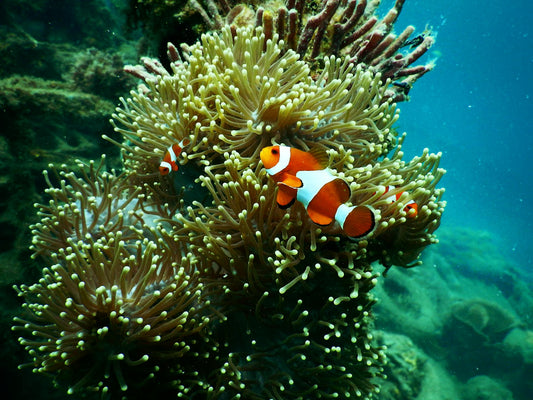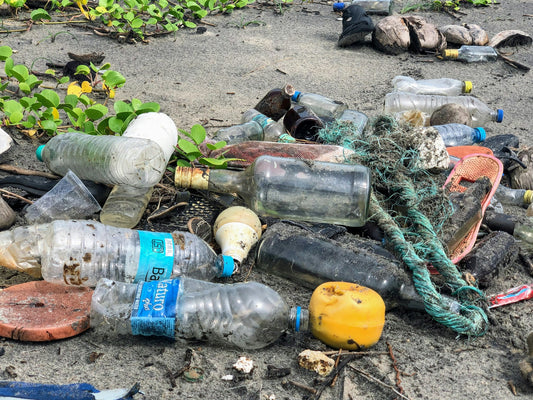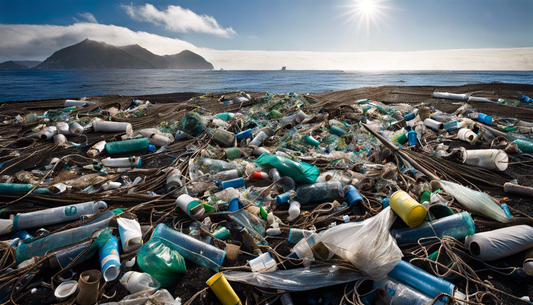Share
Pollution caused by plastics is one of the most widespread problems in the modern world.
The obvious effects, such as the dirty shores and the affected animals, tend to attract the public's attention, but the unseen effects are often ignored.
These costs do not end at the level of environmental degradation but permeate through human health, economies, and the structures of ecosystems.
According to a WWF report, the lifetime cost to society, the environment, and the economy of plastic produced in 2019 alone was US$3.7 trillion, which is more than India's GDP.
What’s surprising is that the report also revealed that if no efforts are made to address this, the cost is expected to double by 2040 to $7. 1 trillion.
This will be equal to 85% of total health expenditures in 2018 and more than the sum of Germany, Canada, and Australia’s GDP in 2019.
In this blog post, we will examine the hidden costs of plastic pollution to society, the economy, and the environment.
Health Implications

Plastic pollution significantly affects human health. Extensive studies have been conducted that show the negative effects of plastic on humans, especially related to microplastics and chemicals.
Microplastic Contamination
Microplastic refers to plastic particles less than five millimeters in size, and they are present in the air, water, and food we consume daily.
These particles can be derived from the breakdown of larger pieces of plastic or the spill of production materials.
A study conducted by the University of Newcastle in Australia said an average individual may be consuming roughly 5 grams of plastic a week, which is the equivalent of a credit card.
This has been found to be due to the consumption of water seafood, and other foods containing the small plastic particles.
Once consumed, the microplastics leach chemicals and pollutants and disrupt the bodily function.
Toxic Chemicals
Some of the volatile components of plastics include phthalates and bisphenols. You will likely have heard of bisphenol A (BPA), which has been banned in some countries and has been in the middle of various scandals.
Many of the contained chemicals in plastic are classified as endocrine disruptors. These chemicals affect the hormones and have been associated with various diseases.
The health implications of plastic-related chemicals are manifold and range from blood disease, to immune system disruptions to various cancers and even reproductive issues.
The Economic Toll

Waste Management Expenses
Plastic waste management is a costly process. Expenses incurred in collecting, separating, disposing of, and recycling plastics were estimated north of $32 billion in 2019 and have since increased even more.
They are usually funded from the local government and citizens’ pocket, which are funds that could otherwise be used for other important needs of the public.
Clean-Up Costs
According to the research, governments, NGOs, and citizens collectively spend up to $19 billion per annum on clean-up processes.
This encompasses cleaning up the plastic litter found on the beaches, water bodies, and common areas.
The emphasis on human effort in these efforts shows that the cost of cleaning up plastic pollution can be prohibitive.
Impact on Key Industries

Tourism
Plastic pollution has a severe impact on tourism, as beaches and clear water are important for tourists in coastal areas.
According to Deloitte and the Plastic Soup Foundation, marine litter potentially resulted in a loss of up to $2.4 billion in revenue for the marine tourism industry worldwide.
Fisheries and Aquaculture
Marine pollution is caused by plastics, and this harms marine life, thus affecting fisheries and aquaculture.
Current studies by the United Nations Environment Programme (UNEP) show that the world economy's costs due to plastic pollution of the seas amount to $13 billion per year.
This includes costs to the fishing industry and expenditures that may arise from cleaning up the affected areas.
Hidden Environmental Consequences of Plastic Pollution

Greenhouse Gas Emissions
The use of plastics is a major contributor to greenhouse gas emissions. Plastic produces 1.8 billion tonnes of greenhouse gas emissions each year; this is higher than the emissions from both the aviation and shipping industries.
If the trends are to persist, these emissions could rise to 1.34 gigatons per year by 2030, the equivalent of building 295 new 500-megawatt coal-fired power stations. The total emissions resulting from plastics would reach up to 56 gigatons by 2050, devouring 10-13% of the remaining carbon budget.
Seas and Carbon Sinks Interference
If not well managed, plastic waste threatens the oceans and their capacity to absorb carbon. Coastal waters, by sequestering carbon, provide important ecosystem services in the fight against climate change.
However, plastics that end up in the seas and oceans degrade the quality of these habitats and limit their ability to absorb carbon, thus deepening the climate change crisis.
Biodiversity Loss
One of the major concerns about the increasing use of plastics is the negative impact they have on marine life.
The most vulnerable species are those that live in water and are likely to consume the plastics or get trapped in them.
This may cause accidents, deaths, and, consequently, a decrease in population and species numbers in the long run.
Research shows that not just marine life but more than 1,500 wildlife species have eaten littered plastic in the environment.
Biodiversity loss also has indirect impacts on the ecosystem, as it affects the food pyramid and the ecosystem's ability to bounce back in case of a disaster.
Social Justice and Inequity
The negative impacts of plastic waste management are alarming, especially in developing countries.
High-income countries dump their waste in low-income countries that lack the infrastructure to manage and deal with the waste.
This results in open burning and dumping of plastics, which negatively impacts air and water quality and is a health hazard to humans.
In low-income areas, there is poor access to clean water and food, which leads to more packaged products that create more plastic waste.
Moreover, most of these communities reside close to dumpsites or waste disposal facilities, where they are likely to be affected by toxic gases produced by burning plastic, which can lead to respiratory and cardiovascular diseases.
What Needs to Be Done?

The cost of plastic pollution goes beyond the heaps of garbage seen in our environment.
The effects on human health, financial costs, affected ecosystems, and vulnerable communities demonstrate the extent of plastic pollution on our planet.
The fight against plastic pollution requires a united front of governments, consumers, and businesses.
- Scientists are working on creating new kinds of plastics that are replacing traditional ones, such as bioplastics based on renewable materials
- Governments need to set the new standards and regulations around plastic pollution
- Businesses need to play their part by adopting more sustainable practices, such as using biodegradable materials and reducing plastic packaging
- Consumers need to demand sustainable business practices and vote with their wallets, as they support sustainable companies
Did you know that plastic causes these tremendous costs to society? Leave a comment below and engage in the discussion!
We hope you enjoyed this article. If you want to read more like this, make sure to check out our Blog and follow us on Instagram. If you are interested in truly sustainable products, check out our Shop.








